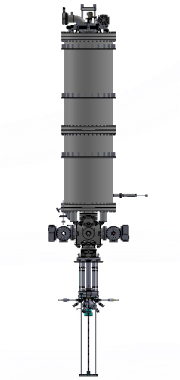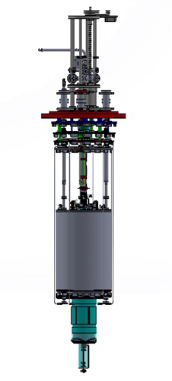Research Program
Low Temperature Scanning Tunneling Microscopy
My main research interests are studying properties of single spin centers made out of single atoms and molecules. For those studies, developing next generation low temperature scanning tunneling microscopy is a very important aspect of my research. These days I am working on construction of 1) scanning tunneling microscope capable of study materials at milli-Kelvin temperatures and high magnetic field, 2) scanning tunneling microscope capable of detecting photons from low temperature scanning tunneling microscope junction, and 3) scanning tunneling microscope capable of working in air/solution environment.
My ongoing projects are as follows.

Using this machine, which is about to go to a stage of showing its full power soon, I’d like to focus on detecting and controlling single spin centers made out of single magnetic atoms and molecules. Not only studying single electron spins, but also nuclear spins can be detected through the hyperfine interaction through the use of a milli-Kelvin high magnetic field (~ 10 Tesla) scanning tunneling microscope, if we can realize electron temperature of milli-Kelvin range. I am always interested in building small sized scanning tunneling microscope with new smart functionalities. For example, a more powerful scanning tunneling microscope z motor (< 5 mm in diameter), so called, Koala drive, is under development using piezo stacks.

Using a homemade sub-Kelvin cryostat with a 7 Tesla superconducting magnet, and image guides and grin lens, which is used in medical endoscopes, I am constructing sub-Kelvin high magnetic field photon scanning tunneling microscope.
Recently, using spare parts, I constructed an air scanning tunneling microscope which can be used as a solution scanning tunneling microscope. Chemistry people make molecules with interesting properties, but sometimes those molecules cannot be vacuum-deposited through thermal evaporation. So, with this setup, I hope that various chemistry people’s needs can be met. In the future, I will implement a technique of mass spectroscopy to above-mentioned scanning tunneling microscope, so that much wider range of interesting molecules can be studied.
 Center for Artificial Low
Center for Artificial Low